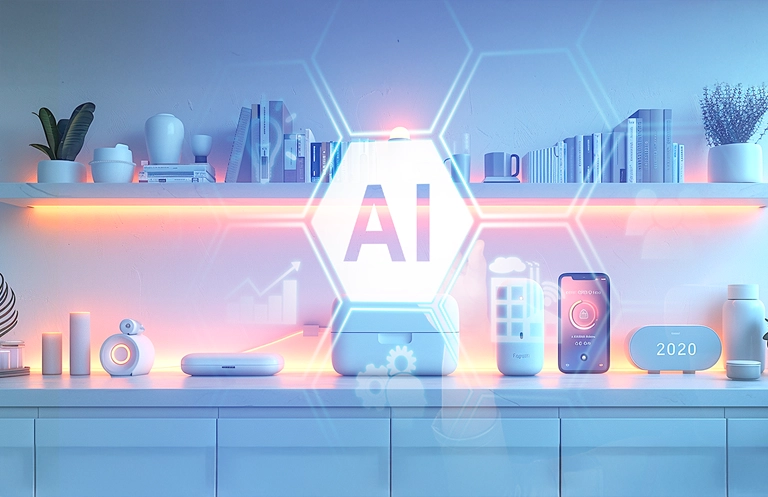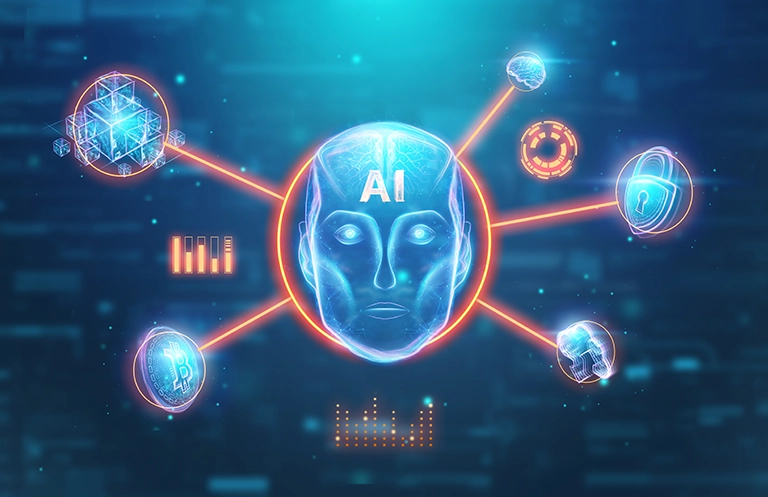Improvement of Diagnosis Accuracy with AI and ML
Medical imaging is another area where AI and ML significantly contribute to increasing precision. Advanced imaging techniques combining AI with traditional methods like CT scans, MRI scans, or X-rays produce more accurate visual representations of internal structures. These combined techniques allow medical professionals to pinpoint subtle variations that might be indicative of health issues.
ML and AI have a notable impact in the field of AI-assisted radiology. AI-powered algorithms integrated into radiological systems automate the image processing workflow, improving the detection of anomalies by mitigating human errors that may stem from overlooking subtle cues, fatigue, or personal bias. Additionally, ML algorithms process vast datasets, learning to recognize patterns and distinguish between healthy and pathological states to provide more accurate diagnoses.
Another crucial aspect of AI-driven diagnostic tools is their capacity for early detection. Early disease identification reduces the need for invasive interventions and improves patient outcomes by enabling more timely treatments. For instance, AI algorithms can examine vast quantities of medical data to spot high-risk patients even before any clinical symptoms appear. This ability proves invaluable for detecting asymptomatic patients or those whose conditions might otherwise go unnoticed.
Enhancing Efficiency and Speed with AI and ML Algorithms
By automating difficult procedures and increasing overall efficiency, AI and ML algorithms have revolutionized a number of industries. In the field of medical imaging, these innovative technologies play a crucial role in streamlining workflows, expediting diagnosis, and optimizing radiology procedures. This technical analysis will delve into the intricacies of AI-enhanced medical imaging workflows, ML algorithms for faster diagnosis, automation in radiology with AI, and the reduction of time for image analysis.
1. AI-Enhanced Medical Imaging Workflow
The integration of AI in medical imaging workflows aims at improving image acquisition, processing, and interpretation without sacrificing accuracy. AI systems can efficiently evaluate massive amount of data using deep learning techniques to find patterns that are difficult for humans to notice. The result is a more accurate representation of the patient’s condition, which aids healthcare professionals in making quicker and better-informed decisions.
2. ML Algorithms for Faster Diagnosis
Machine Learning algorithms are particularly beneficial in medical imaging when it comes to expediting diagnosis. These algorithms can be trained on extensive datasets to recognize various anatomical structures, pathologies, and abnormalities present in images such as X-rays, MRIs, or CT scans. Once trained, ML models can accurately and rapidly identify potential issues within the images, significantly reducing the time spent by radiologists on manual analysis.
3. Reducing Time for Image Analysis
One of the most significant advantages of employing AI and ML algorithms in medical imaging is the drastic reduction of time spent on image analysis. In contrast to hours of hand examination, automated systems can evaluate complicated images and datasets in a matter of seconds or minutes. This reduction in analysis time allows radiologists to focus on critical cases and expedite patient care, leading to improved outcomes for patients and more efficient use of healthcare resources.
Deep Learning Algorithms in Medical Image Analysis
Deep learning algorithms have revolutionized the field of medical image analysis, providing remarkable improvements in accuracy and efficiency. These algorithms offer profound benefits to various imaging modalities, such as Computed Tomography (CT), Magnetic Resonance Imaging (MRI), ultrasound, and X-ray, by automating complex tasks that were once the sole domain of expert human observers.
Deep learning’s capacity to perform segmentation tasks is one of its main advantages in medical image analysis. This involves subdividing an image into its constituent elements to identify and isolate specific regions or structures of interest. Convolutional Neural Networks (CNNs) have proven particularly adept at this task, automatically learning to recognize patterns and features through a series of convolutional and pooling layers. By using multiple layers of these networks, deep learning models can accurately extract high-level features and achieve robust segmentation results that often surpass human-expert performance levels.
Another crucial aspect of deep learning in medical image analysis is its ability to automate feature extraction. Traditional feature extraction methods require manual identification and selection of relevant features, a time-consuming process prone to inconsistency and error. With deep learning algorithms, this process becomes automated, allowing for the rapid identification of significant patterns and features with minimal human intervention.
One example of automated feature extraction is seen in Deep Convolutional Neural Networks (DCNNs), which adaptively learn relevant features by training on large amounts of labeled data. Through the iterative process of forward propagation and error-backpropagation, these networks refine their feature detection capabilities by minimizing classification error rates during the training phase.
The Future of Medical Imaging: Embracing the Potential of AI and ML
The incorporation of AI and ML technologies in medical imaging is transforming healthcare by enhancing diagnostic accuracy, enabling early detection, and expediting the decision-making process. This article delves into the futuristic applications of AI in medical imaging while addressing challenges to adopting this technology on a widespread scale.
- Automated Image Segmentation: AI-driven algorithms have shown promise in automating the process of image segmentation, separating regions of interest from irrelevant background elements. This can contribute to considerably reduced processing time, improved diagnostic accuracy, and more efficient workflows.
- Radiomics and Quantitative Imaging: Radiomics is an emerging concept that refers to the extraction of high-dimensional data from medical images using AI algorithms. Coupled with ML-based quantitative imaging techniques, radiomics can provide effective decision support systems for various clinical applications such as stratification, prediction, and prognosis.
- Early Disease Detection: AI technologies hold promise for screening populations at risk for certain diseases by identifying subtle radiological findings indicative of early-stage pathologies. As a result, healthcare professionals can intervene before the disease progresses to more advanced stages, preventing needless suffering and reducing financial burdens on health systems.
A leading technology enterprise in optics and optoelectronics wanted to enhance their ophthalmology equipment by developing a cloud-based service for iris recognition. eInfochips took up the project and created a Microsoft Azure based IoT platform, incorporating device, cloud, and web applications. The platform enables patients to remotely scan their eyes using the device, with each scan uploaded to the cloud for review by clinicians. The doctors can then diagnose the condition and recommend appropriate measures, potentially saving patients 15 to 40 percent on additional Medicare Fees for Service (FFS) costs for eyecare. For consumers, physicians, and service providers alike, this approach offers convenience and financial benefits.
Bottomline
In conclusion, AI and ML have had a profound impact on medical imaging through a variety of applications. They hold tremendous potential for future diagnostic advancements by increasing accuracy, expediting workflows, and ultimately enhancing patient care. Despite these remarkable achievements, challenges remain in integrating AI and ML approaches into routine clinical workflows. Issues such as privacy concerns, algorithm transparency, interpretability, and the need for robust validation are still being addressed to facilitate widespread adoption. Therefore, further research and development are vital to address the existing challenges and refine these technologies for seamless integration into clinical practice.












